#male painted bunting
Explore tagged Tumblr posts
Text

Birdtober Day 23: Painted Bunting (Passerina ciris)
Reference by Dakota L.
Birdtober Day 24: American Goldfinch (Spinus tristis)
Reference by Jonathan Irons
Day 1 and a description of the challenge
All of my birdtobers
#arcticsart#paper#my art#watercolor#bird#birds#birdtober#artists on tumblr#daily art challenge#october art challenge#painted bunting#american goldfinch#male painted bunting
9 notes
·
View notes
Text

dteam bird,,,
0 notes
Text

Painted Bunting (Passerina ciris), male, family Cardinalidae, order Passeriformes, Florida, USA
photograph by Denise Johnson
899 notes
·
View notes
Note
Not an ask. Just FYI. Are you familiar with Star Trek Lower Decks? After 4 seasons, they finally identified Dr. Migleemo's species by name. He's a human sized bipedal bird. His species is called Klowahkans. Sound it out. The joke writes itself, those clever Lower Decks writers. Go look up Dr. Migleemo, and Dr. T'Ana. She's a cat-lady. Have a good weekend!
Hahah, Ive not seen the show yet.
That name is -___-
Here's a favorite bird for you...

Painted Bunting (Passerina ciris), male, family Cardinalidae, order Passeriformes, Loxahatchee National Wildlife Refuge, FL, USA
photograph by Jean Zuo
31 notes
·
View notes
Text
BOTD: Painted Bunting

Photo: Doug Greenberg
"Sometimes called the 'Nonpareil,' meaning 'unrivalled,' a fair way to describe the unbelievable colors of the male Painted Bunting. This species is locally common in the Southeast, around brushy areas and woodland edges. It is often secretive, staying low in dense cover. However, males sing their bright warbling songs from higher in the trees, partly hidden among foliage or sometimes out in the sun on an exposed perch. Some lucky Floridians have Painted Buntings coming to their bird feeders in winter."
- Audubon Field Guide
#birds#painted bunting#birds of north america#north american birds#buntings#passerines#birds of the us#birds of mexico#birds of central america#birds of the caribbean#birding#bird watching#birdblr#birblr#bird of the day#Passerina ciris
66 notes
·
View notes
Text
Virpaintundic // Virpasserisic
— vir + (paint)ed + b(unt)ing + ic // vir + (passe)rina + (ci)ris + ic
Virpaintundic, Virpasserisic: a gender term related to the male Painted Bunting (Passerina ciris). This gender is not inherently male in nature or aligned.

[ID: a rectangular flag of 9 uneven horizontal stripes, the colors go from top to bottom as warm brown, matte blue, dark brown, dark green, light green, dark brown, matte blue, and warm brown./end ID]
Design/term notes; none.
Taglist # @radiomogai @obscurian @faunagender @smilepilled @rwuffles (feel free to ignore.)
#liom#mogai#liom community#mogai community#liom label#mogai label#liom safe#mogai safe#: koiran nappulat#neogender#neogender term#neogender flag#neogender coining#animalgender#aviangender#birdgender#faunagender
7 notes
·
View notes
Video
Male Painted Bunting by Mark Stevenson Via Flickr: img6379 Thank you for all the views faves and comments
8 notes
·
View notes
Note
Ik you're mostly a Sinclair poster (a very good one at that) but do you have any animal associations for Dante? Or any of the other sinners for that matter
YES YES ACTUALLY!!! SO HAPPY ABOUT THIS ASK...
I have a list of animal associations for project moon characters in general... I'm still working on it but I eventually want to get to background characters too like the optional ruina receptions etc. But currently these are my thoughts for limbus...
Dante: Merulanella blister/tricolor isopod (a perfect match if you ask me... very expensive collectionist morph too). This might change once we know more about them though!
For Verg and Charon I still have to think some up... But Charon is giving mustelid I must say
Yi Sang: Hooded crow + cicada
Dongbaek: Caramel crow!! (This would be a regular American crow, caramel is a mutation that's still being researched which gives them a creamy brown coloration)
Samjo: Great auk (extinct diver bird/penguin) + Royal tern + otter
Dongrang: African forest buffalo + blue roan shorthorn + Oxpecker + cattle egret
Faust: Rock ptarmigan + wooly aphid (still want to look for more...)
Don Quixote: Quagga + Bearded vulture + Monitor lizard
Ryoshu: Horned owl + Dragontail butterfly + Moth (still need to look into species) + ratsnake/black mamba (reference to Hell Screen)
Meursault: Honestly very hard choice... Mostly for personality reasons, I've been thinking of a Nurse shark + MAYBE badger (noctural + def. want an omnivore in there) + Clam or something
Hong Lu: Mantis shrimp + lemur + Sinosauropteryx (chinese compsognathid with conserved pigments of a ringed tail!)
Heathcliff: Aardwolf + Bronze-tailed peacock-pheasant (want to look for more too...)
Ishmael: Orca (only predator of whales) + kutchicetus (cetacean transitional fossil) + lobster
Ahab: Sperm whale + Narwhal + polar bear
Queequeg: Leopard seal
Rodya: Manul + Cozumel raccoon
Sonya: Leucistic amur leopard + Mediterranean fruit fly
Sinclair (more details...): Eurasian sparrowhawk + indeterminate canine traits. I imagine him as a bilateral gynandromorph (half male/female mutation), inspired by the real recorded specimens of lazuli buntings and canaries.
Demian: Malayan blue coral snake + Boelen's python + Luzon bleeding-heart dove. Pondering on lamb motif + maybe some traces of corvid
Kromer: Mountain lion + Hercules beetle grub + red headed centipede + some mantid perhaps (looking into it)
Outis: Przewalski's horse, or maybe a Mustang (debating, I'm not as informed about equines !) + Harris Hawk + Black headed python
Gregor: Painted trilobite cockroach (infestation) + Ensign wasp (main/original body) + House centipede
12 notes
·
View notes
Text
I've been hoping an adult male painted bunting would show up at the bird feeder ever since the female/immature male appeared weeks ago and look!

he's so colorful! 😭
#birds#I do wish he'd come closer to the camera so he wouldn't be as pixilated but what are you gonna do
3 notes
·
View notes
Text

The painted bunting is a species of bird in the cardinal family, Cardinalidae. It is native to North America. The bright plumage of the male only comes in the second year of life; in the first year they can only be distinguished from the female by close inspection.
3 notes
·
View notes
Text
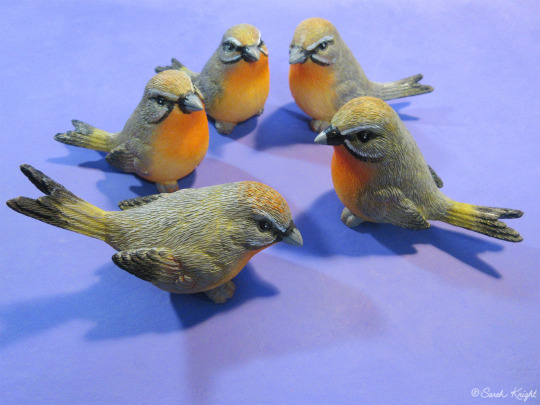
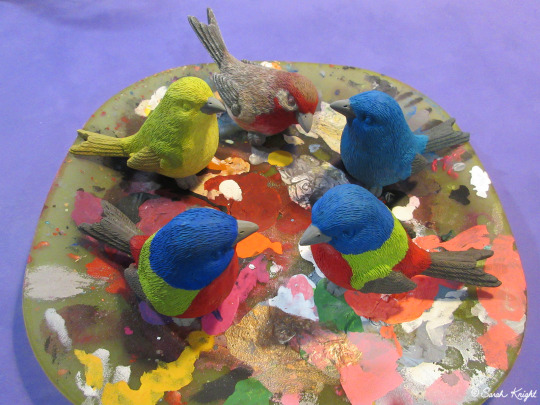
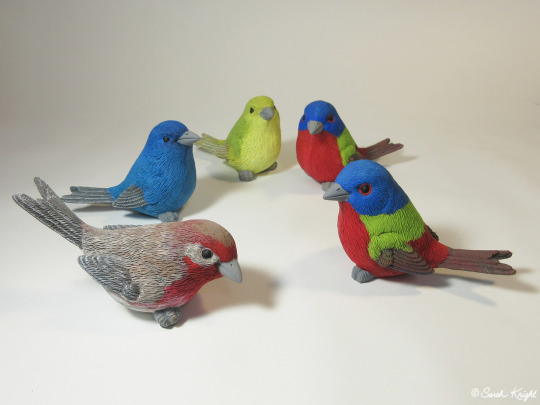
Oh, it's bird knick knack repainting season: bunting addition. House finch (brown/red), indigo bunting (all blue) painted bunting (yellow = female, multicolored = male).
#birds#knick knacks#repaint#repainting#craft project#crafts#painting#figurines#home decor#painted bunting#indigo bunting#house finch#finch#buntings#work in progress
3 notes
·
View notes
Text
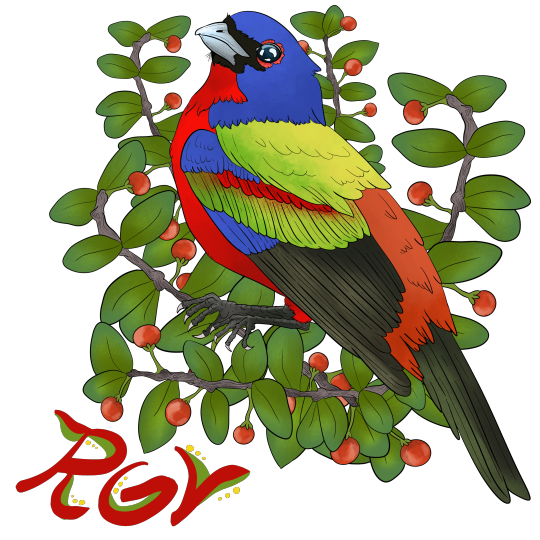
Painted buntings are a rare summer treat in my hometown. The females are a muted green, but the males are a colorful site! Here it is enjoying some yummy tree fruit.
#bird#birds#painted bunting#colorful#colorful birds#art#digital art#digital drawing#digital painting#procreate#procreate art#digital illustration#nature#wildlife#rgv
8 notes
·
View notes
Text

Painted Bunting (Passerina ciris), male, family Cardinalidae, order Passeriformes, Florida, USA
photograph by Jay Paredes
445 notes
·
View notes
Text
Painted Bunting (Passerina ciris)
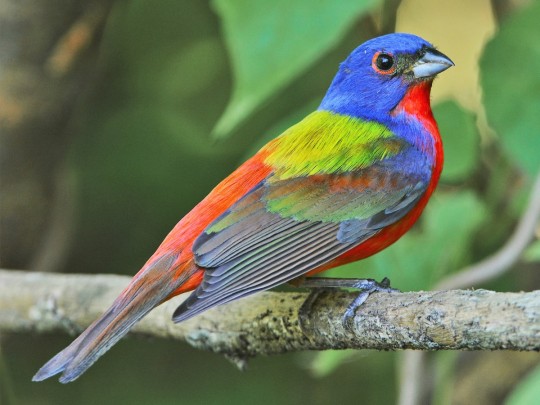
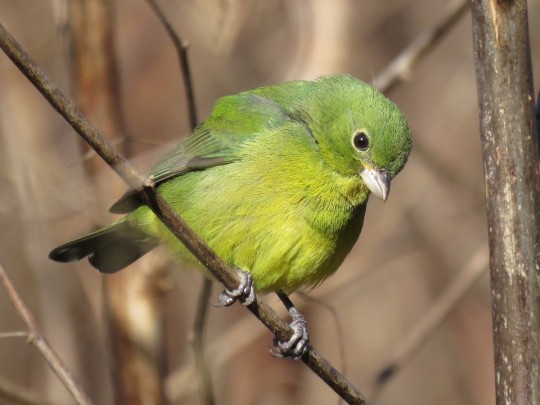
"I was obsessed with these as a kid" "It looks neat."
Painted Bunting have two completely separate populations, each breeding and overwintering in different areas of the Americas. One population breeds mainly in South Carolina, as well as Georgia, North Carolina and Florida, and then overwinters in Cuba and other Caribbean islands. The other, larger population covers Oklahoma, Texas, Louisiana and Missouri, with some breeding in northern Mexico as well, and then they overwinter almost exclusively in central and southern Mexico.
Also my friend said she had a coworker who thought these birds looked like they were colored in by a 4-year-old, so I think that every time I see a picture of them.
Sources:
Image Sources: eBird (male - David Hollie; female/immature male - Lloyd Davis)
10 notes
·
View notes
Text

Birnam Wood by Eleanor Catton review – hippies v billionaires
The Booker winner captures our collective despair in a thrillerish novel about climate crisis
Kevin Power
Fri 3 Mar 2023 07.30 GMT
In a literary marketplace that sometimes seems oversupplied with novels about brittle intellectuals feeling alienated from their emotions, or twentysomethings grinding axes about their exes, there is the wonder of Eleanor Catton: a novelist of lavish technical gifts who addresses herself to the world, broadly and richly conceived.
Catton’s first novel, 2008’s The Rehearsal, was a small miracle. Leaping acrobatically between fictional and metafictional modes, it tells the story of a secondary-school scandal (male teacher, female student) restaged by trainees at a local drama school. There is something almost Brechtian about the way it shocks you out of familiar fictional comfort zones, and something almost Wildean in the way it lobs its arch perceptions, like glittering little hand grenades, at all sorts of social and artistic pieties.
Catton’s second novel, 2013’s The Luminaries, was a large miracle (it won her the Booker). Running to 821 pages, and set among the gold fields of 1860s New Zealand, The Luminaries is structured around two highly artificial conceits. At one level it spins an intricate pastiche-Victorian mystery revolving around gold, opium and changed identities. At another, its structure follows elaborate astrological rules – a prefatory “Character Chart” notes which characters are “Stellar” and which “Planetary”, and so forth. It is brilliant; a virtuoso performance. But, like most virtuoso performances, it does leave you with the nagging suspicion that virtuosity itself is the point.
Take the novel’s characters, each one carefully painted but nonetheless in thrall to Catton’s great determining structures. The luminaries have personalities but not really that much in the way of life. Catton’s marvellously imagined 19th-century world revolves, and the astrologically directed people go about their tricksy business, but it is difficult not to feel that the machinery underneath it all is the real star of the show. As with certain CGI blockbusters, you marvel at the spectacle and wonder about the vision.
Birnam Wood, Catton’s third novel, raises the question of vision once again. Technically speaking, it’s another virtuoso performance: elaborately plotted, richly conceived, enormously readable. It might seem like cavilling to suggest that what it lacks is an original or surprising sense of our riven world. But without this kind of vision – without insight that reaches beyond good and evil – you risk creating only a superbly polished mirror, one that shows us the world as we already know it.
Literary novels, as opposed to the sort of thriller that pitches goodies against baddies without much moral shading, ideally do more than this. And, in fairness, Catton’s publisher is calling Birnam Wood “a gripping psychological thriller”. Political thriller might be more accurate, since it is really about the schemas and deadlocks of our contemporary politics. Birnam Wood – the forest that moves to Dunsinane Hill to herald the fall of Macbeth – is the name chosen, semi-ironically, by an “activist collective” based in Christchurch, New Zealand. Birnam Wood’s founder, Mira Bunting, hopes for “nothing less than radical, widespread, and lasting social change”; her group’s contribution to this change takes the form of guerrilla gardening projects, reclaiming waste public and private land to grow food crops.
Is Mira Macbeth? She might be; she enters into a deal with the novel’s villain, billionaire Robert Lemoine, a Peter Thiel-resembling “doomsteader” who seems to be buying up a tract of rural New Zealand so he can build a luxury bunker and ride out the apocalypse. Then again, Lemoine himself might be Macbeth. His doomsteading project, we quickly learn, is a front. Secretly, he is extracting rare-earth minerals from Korowai national park. He toys with Mira and invests in Birnam Wood largely for the hell of it – because he is, as the novel exhaustively, and at points hilariously, makes clear, a total psychopath. Birnam Wood moves its operations to Lemoine’s doomsteader tract. Will this herald his fall?
It’s hippies versus billionaires: a scenario full of comic potential, of course. To spike the mixture, Catton throws in a righteous young aspiring journalist, Tony Gallo, and a recently knighted New Zealand business maven, Sir Owen Darvish, and his loving wife, Lady Darvish (as with Sir Owen’s fictional predecessor, Sir William Lucas in Pride and Prejudice, “The distinction had perhaps been felt too strongly”).
The first half of the novel, setting all this up, is hugely entertaining. Catton, you think, can do anything fiction requires: she can write funny social satire; she can stage a convincingly self-defeating fight among leftist radicals; she can notice “the hash of oily streaks and fingerprints” on a locked phone screen. You keep waiting for her to do something astonishing with her setup – to give us a novel that doesn’t just crash dishevelled goodies (Birnam Wood) into a suave baddie (Robert Lemoine).
But instead of ushering us into a world of surprising insights, Birnam Wood relies – no spoilers – on a finely spun web of misunderstandings and coincidences to drive its increasingly thrillerish second half. The fictional craftsmanship is above reproach. But it’s hard not to feel a bit disappointed that such a beautifully built novel just tells us the same old, same old: billionaires bad! Leftwing radicals good, if sometimes misguided and hapless!
Then again, Birnam Wood does efficiently dramatise a specifically contemporary pessimism: its theme is our collective despair about the locked social geology that prevents meaningful action on climate change. It’s an important subject. And maybe we should expect our schematically unequal world to produce schematic fiction – stories about goodies and baddies, poor people and billionaires, peasants and kings. Catton is not wrong; she is certainly showing us the world we know. But our culture is already rife with calls for moral simplicity. Isn’t it the duty of the literary novel to go deeper?
3 notes
·
View notes
Text
Painting Bunting (Passerina ciris)

Range: Parts of Central America, the Caribbean, and the southern United States
The first time I saw a male painted bunting, I was stunned. The male painted bunting really is blue, red, and green in real life. I thought he must have been an escaped or abandoned pet, but he was instead a native wild bird! He came back later so I saw him again, and my brother also saw the painted bunting separately.
For more information:
Audubon
eBird
CornellLab's All About Birds
Photos are not my own.
Male painted bunting (first photo): Sandhillcrane, CC BY-SA 4.0 https://creativecommons.org/licenses/by-sa/4.0, via Wikimedia Commons
Female painted bunting (second photo): Dan Pancamo, CC BY-SA 2.0 https://creativecommons.org/licenses/by-sa/2.0/, via flickr
0 notes

